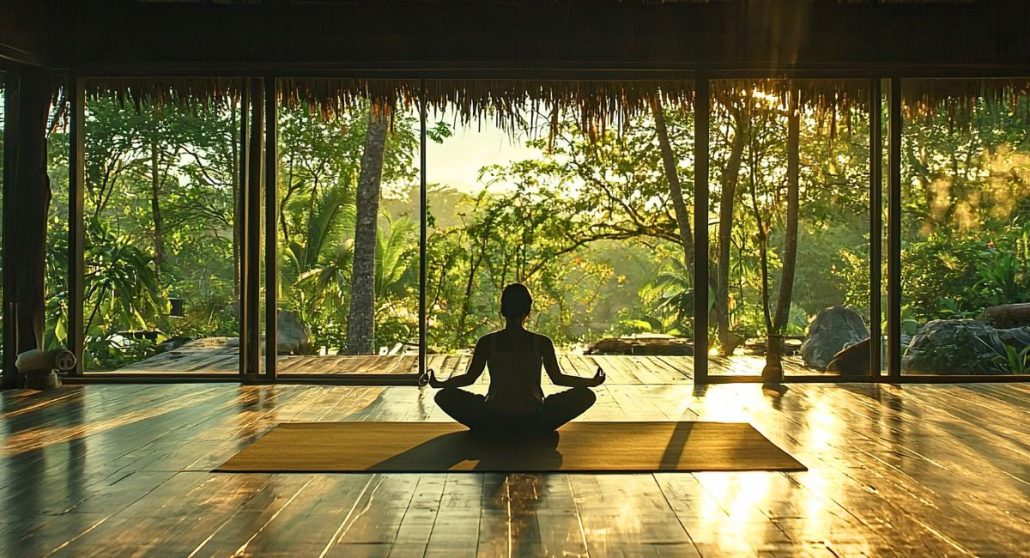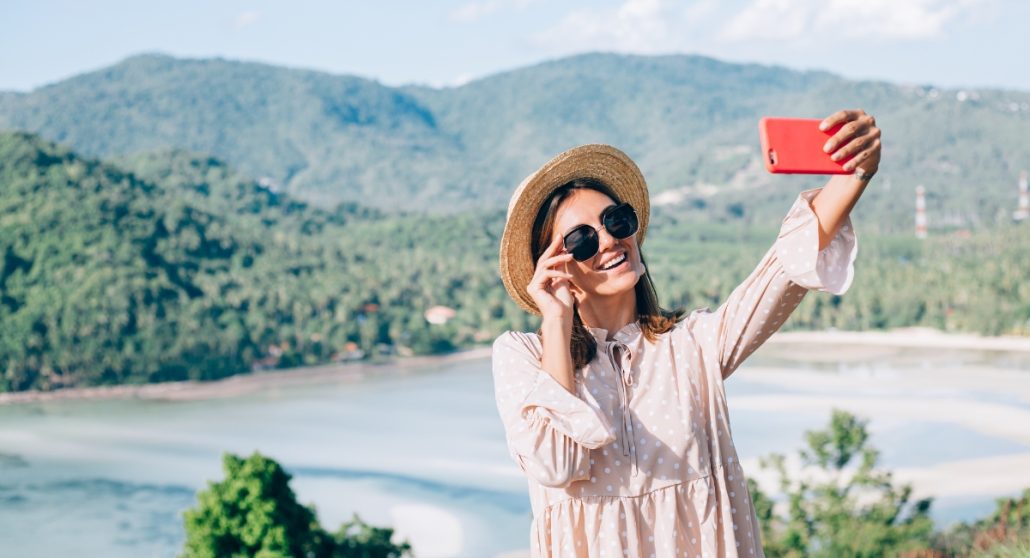A booking no longer begins at the search bar. Long before a traveler types “hotels near…” into Google, the decision is already in motion.
It might start with a 20‑second TikTok showing a rooftop pool, a carousel of cozy lobbies on Instagram, or a friend’s story from a stylish city hotel—tiny moments that quietly begin the guest hotel booking journey and ignite wanderlust.
The guest journey today begins with a scroll. For hoteliers, this shift is both a challenge and an opportunity. Winning guests’ attention before they even start planning is now the true beginning of hospitality.
Hotel Guest Journey Starts Before Search: The Spark
Picture this: A young traveler scrolls Instagram during a coffee break. She has no immediate travel plans. Suddenly, a reel catches her eye, a boutique hotel perched above the ocean, framed by a fiery sunset. She pauses, watches again, and saves the post. That single moment is the start of her guest journey.
Later, when she thinks of a weekend getaway, the hotel she glimpsed on her feed comes instantly to mind. By the time she opens a search engine, her choices are already narrowed. This is no longer an exception, it’s the norm.
 The funnel has shifted. Discovery comes before search, and social content has become the earliest and often most powerful touchpoint in the guest journey.
The funnel has shifted. Discovery comes before search, and social content has become the earliest and often most powerful touchpoint in the guest journey.
From Inspiration to Action
Once the spark is lit, guests move into research mode—checking tagged photos, reviews, and the website—yet the bond already exists; these hotel micro‑moments dreaming to booking give brands that engaged them early a decisive head start.
By the time booking platforms or online travel agents (OTAs) appear, the battle is half-won or half-lost; if a brand misses the early guest hotel booking journey, it may never make the consideration set.
This is why social-first branding has become fundamental. It’s not about chasing trends for the sake of vanity metrics, it’s about being present at the very first stage of the guest journey.

Storytelling Over Selling
Travelers aren’t scrolling to see ads; they’re looking for stories. Polished promos rarely move people—authentic moments do, and they’re the engine behind hotel direct bookings from social media when viewers feel a real connection.
- A chef sharing a quick clip of a dish being plated.
- Guests laughing together at a poolside breakfast.
- A behind-the-scenes look at the staff preparing a wedding setup.
These are the kinds of stories that don’t just promote a property, they show its spirit. They give guests a glimpse of the experiences and emotions waiting for them. A hotel that embraces storytelling positions itself not as a place to stay, but as part of the guest’s future memory.

A Modern Guest Journey
Let’s follow a real-world example:
- The spark: Maria sees a reel of a yoga deck overlooking rice terraces. She saves it.
- The curiosity: Weeks later, she looks up the hotel, checks its Instagram highlights, and watches more videos.
- The research: She Googles reviews and compares prices, but the property already feels familiar.
- The booking: She books directly through the hotel’s website, drawn by an exclusive package.
- The memory: During her stay, Maria shares her own photos and videos, passing the inspiration forward.
The cycle repeats: scroll, click, book, share. Every guest becomes part of the next guest’s journey.

The New Frontier: Social Commerce
Social media is no longer just about inspiration. Platforms are turning into booking engines themselves. Instagram and TikTok now allow users to click “Book Now” without leaving the app. The path from dreaming to booking is becoming shorter and more seamless.
For hotels, this is both an opportunity and a wake‑up call. A strong social media presence is no longer about branding alone; it can directly convert browsers into bookers. Smart influencer marketing for hospitality amplifies reach and trust, while adding “Book Now” options inside feeds helps capture travelers during the pre‑booking guest journey stages—the exact moment of inspiration.

Tips & Trends for Hoteliers
The question, then, is how hotels can thrive in this new landscape where journeys begin before search. Here are the trends shaping success:
1. Short-Form Video Wins
Guests spend more time on TikTok and Instagram Reels than any other format, so lean into short‑form video hotel marketing with authentic, snackable stories that often outperform polished ads.
2. User-Generated Content as Currency
Guests trust other travelers more than branded campaigns. Encourage UGC for hotels with branded hashtags, photo spots, or small incentives—a single authentic guest video can outweigh weeks of paid ads.
3. Authenticity Over Perfection
Hotels that reveal their human side including staff introductions, local partnerships, even behind-the-scenes moments are more relatable. Guests are not looking for flawless; they are looking for genuine.
4. Social Commerce Integration
Don’t make guests leave the platform to book. If your audience discovers you on Instagram, let them book from Instagram. The shorter the journey from spark to action, the higher the chance of conversion.
5. Consistent Storytelling
A one-off viral post is not a strategy. Consistency builds recall. Even if a guest doesn’t book right away, repeated exposure ensures your property remains top of mind when they are ready.
6. AI-Driven Targeting
Algorithms now play a huge role in who sees your content. Understanding and leveraging paid social campaigns with precise targeting can amplify your reach, ensuring your hotel appears in the feeds of those most likely to book.

The Journey Before the Journey
A traveler’s story doesn’t begin with “Where should I stay?” It begins with “That looks amazing.” The first step is no longer the search bar, it’s the scroll.
Hotels that embrace this shift, that tell stories instead of simply selling rooms, will be the ones that spark curiosity, capture attention, and ultimately win the booking.
The guest journey now begins before the journey itself. The only question is: when your future guests are scrolling, will they stop for you?
Frequently Asked Questions (FAQ)
1) When does the hotel guest journey actually start?
It often begins with inspiration on social platforms long before a search query, as short‑form videos and stories spark intent in the dreaming stage.
2) Why is social media critical before search?
Social content builds familiarity and emotional connection, so by the time guests compare options, the brand is already top‑of‑mind and more likely to be shortlisted.
3) How can hotels turn social discovery into direct bookings?
Add “Book Now” paths in social bios and posts, align offers with content themes, and ensure the website/mobile booking flow is fast and mobile‑optimized for that moment of intent.
4) What content types work best at the inspiration stage?
Authentic short‑form video and UGC showing real experiences, staff moments, and local flavor outperform polished ads for awareness and consideration lift.
5) How should touchpoints be mapped from scroll to stay?
Map stages from Dreaming → Planning → Booking → Pre‑arrival → Stay → Post‑stay, then define content, CTAs, and metrics for each micro‑moment to guide guests forward.

